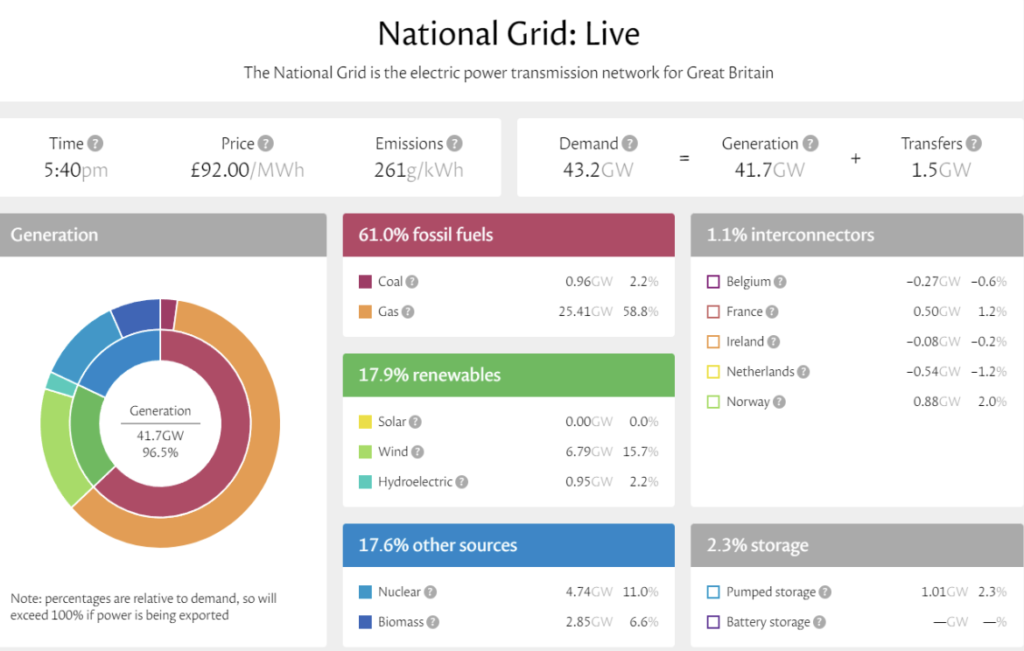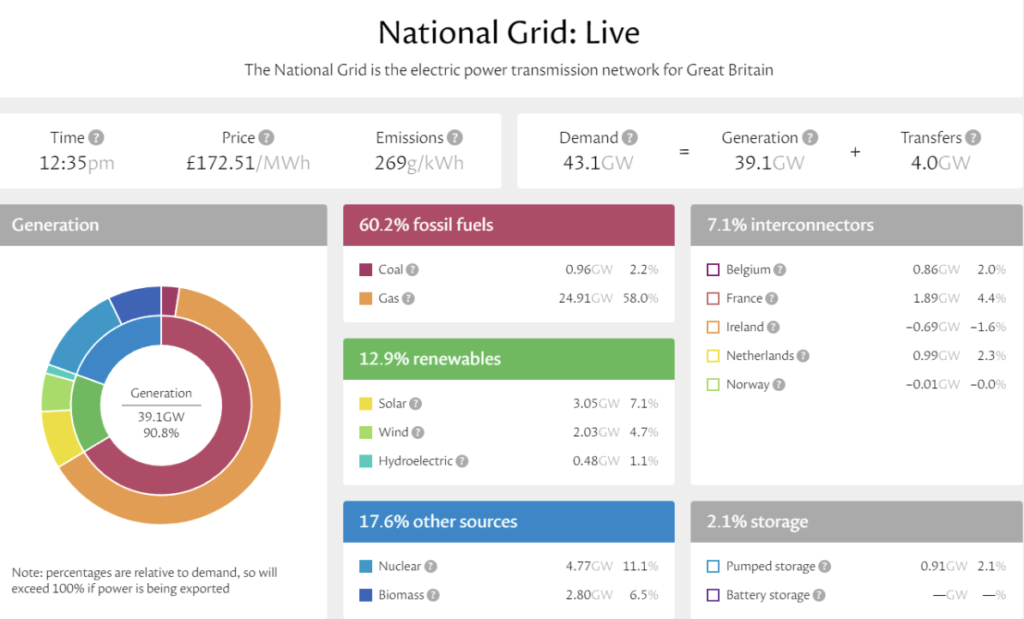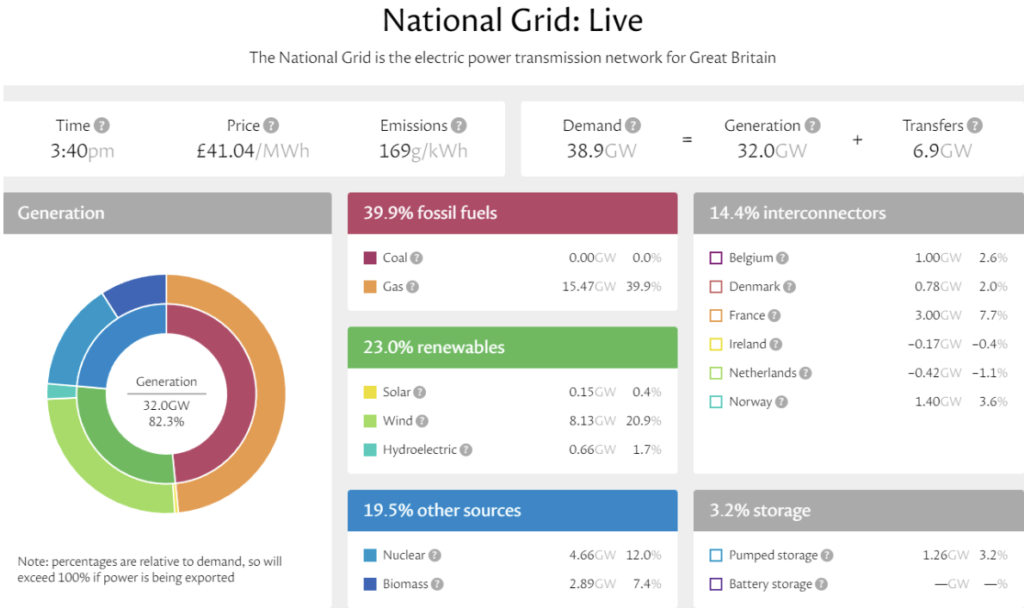John Booth, Chair of The DCA – Energy Efficiency & Standards Steering Committee and MD of Carbon3IT Ltd, discusses the discrepancies of data centre energy consumption reporting, and the future power needs of our rapidly expanding sector.
How much energy did the UK commercial data centre sector use in 2021 – 2023?
I’ll answer that later.
We’re all seeing, on a fairly regular basis, announcements about new large 100 MW plus data centres being built in the UK, Slough, Kent; Havering, Newport, and Manchester are some examples from 2023 alone.
We know from government announcements that the UK is set to be an ‘AI powerhouse’ with millions of investment promised. But there is a fundamental problem: access to power.
For a recent presentation, I took the liberty of checking the National Grid: Live website. It details the UK’s generation and source, the demand, the interconnectors (power we buy from our European neighbours) and storage. I checked the data on 30 November 2023 at 5:40pm and 1 December at 12:35pm, and got the below data:


I looked at the site again whilst writing this article on 3 Jan 2024, and got the below data:

There are a couple of items worthy of attention. First up the price: for 30 November, the price was £92/MWh, on 1 December, it was £172.51/MWh and on 3 January, it was £41.04/MWh. But what is more concerning to me is that on 30 November, 1.5 GW were drawn from the interconnectors, followed by 4.0 GW on 1 December and 6.9 GW on 3 January – and this was 14.4% of demand.
In essence, we do not have sufficient generation capacity in the UK right now and are relying on our European partners to keep the lights on.
So, we must have a plan to be self-sufficient in energy – don’t we?
Relying on interconnectors
Unfortunately, it appears not. The only new power stations in the pipeline are Hinkley Point C and Sizewell C. The former is not due to start generating until 2036, and the latter is still seeking planning permission, so perhaps by 2040. We will continue to draw energy from interconnectors for some time yet, and this is some of our energy spend going overseas instead of being invested in the UK.
You may also be aware of or seen the National Grids ‘Great Grid Upgrade’ project. In their own words,“The Great Grid Upgrade is the largest overhaul of the electricity grid in generations. Our infrastructure projects across England and Wales are helping to connect more renewable energy to your homes and businesses.” The upgrade is reputed to be costing around £54 billion.
I fail to see how, given these twin problems, these proposed data centres can obtain sufficient power for their projected needs – if anyone can tell me, I’d appreciate it!
To answer the question posed at the start of this article – what was the energy consumption of the UK commercial data centre sector in the period 2021-2023? This data by the way is from the fifth reporting period of the data centre Climate Change Agreement (CCA), where commercial operators can obtain a reduction in the climate change levy in return for energy efficiency improvements based on PUE reductions. This scheme does not apply to enterprise data centres.
So, the CCA target period 5 indicates that the total CO2 was 4,293,041.38 tonnes, using a grid factor of 0.3405, and the energy consumption was 12.60 TWh, or around 4% of the UK total consumption. Remember that this is just for commercial data centres, so it excludes some telco, mobile phone, and enterprise data centres.
The actual total data centre estate energy consumption, adding ‘distributed IT’, could be far higher than anyone expected. We estimate it to be actually in the region of 40 TWh, or around 12% of total consumption.
The truth is that no one really knows what the true energy consumption is, because data centres can mean different things to different people.
Finding the truth
So how do we get a true and accurate number?
It depends on your definition of what a data centre is. I prefer the EU Code of Conduct for Data Centres (Energy Efficiency) (EUCOC) definition, which is “For the purposes of the Code of Conduct, the term ‘data centres’ includes all buildings, facilities and rooms which contain enterprise servers, server communication equipment, cooling equipment and power equipment, and provide some form of data service (e.g. large scale mission critical facilities all the way down to small server rooms located in office buildings).”
Now, over in the EU, the recently revised Energy Efficiency Directive has some elements that cover data centres, and their definition (although this may be temporary) is the same as the EUCOC but with a lower limit of 500 kW capacity. From 24 May 2024, all data centres will need to report total energy consumption, the amount (if any) derived from renewable energy sources, water use, and any waste heat reuse – although the method of reporting is still being discussed.
In addition, there is a whole load of ‘site-specific’ information that also needs to be reported; more information on that will become available once the directive is fully published.
So, once every data centre in the EU has published their energy and other data, the EC will have excellent visibility of exactly how much energy data centres above 500 kw capacity are using. My personal view is that the final number will be significant and will result in further measures to reduce consumption being taken.
To conclude, the UK is now experiencing the ‘energy gap’ that some commentators have been discussing for the past 15 years; plans to address the gap are mediocre, patchy and expensive.
Data centre energy consumption is woefully underreported but is improving in the EU; we await to see if the UK government will implement something similar.


